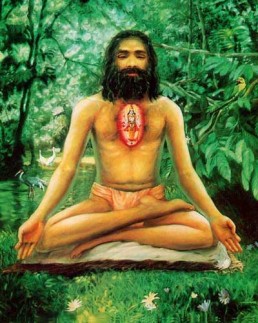Patanjali Yogasutra Introduction
Part 1 – Samādhi-pāda – Yoga and its Aims
1.1
1.2
1.3
1.4
1.5
1.6
1.7
1.8
1.9
1.10
1.11
1.12
1.13
1.14
1.15
1.16
1.17
1.18
1.19
1.20
1.21
1.22
1.23
1.24
1.25
1.26
1.27
1.28
1.29
1.30
1.31
1.32
1.33
1.34
1.35
1.36
1.37
1.38
1.39
1.40
1.41
1.42
1.43
1.44
1.45
1.46
1.47
1.48
1.49
1.50
1.51
Part 2 – Sādhana-pāda – Yoga and its Practice
2.1
2.2
2.3
2.4
2.5
2.6
2.7
2.8
2.9
2.10
2.11
2.12
2.13
2.14
2.15
2.16
2.17
2.18
2.19
2.20
2.21
2.22
2.23
2.24
2.25
2.26
2.27
2.28
2.29
2.30
2.31
2.32
2.33
2.34
2.35
2.36
2.37
2.38
2.39
2.40
2.41
2.42
2.43
2.44
2.45
2.46
2.47
2.48
2.49
2.50
2.51
2.52
2.53
2.54
2.55
Part 3 – Vibhūti-Pāda – Powers
3.1
3.2
3.3
3.4
3.5
3.6
3.7
3.8
3.9
3.10
3.11
3.12
3.13
3.14
3.15
3.16
3.17
3.18
3.19
3.20
3.21
3.22
3.23
3.24
3.25
3.26
3.27
3.28
3.29
3.30
3.31
3.32
3.33
3.34
3.35
3.36
3.37
3.38
3.39
3.40
3.41
3.42
3.43
3.44
3.45
3.46
3.47
3.48
3.49
3.50
3.51
3.52
3.53
3.54
3.55
3.56
Part 4 – Kaivalya-pāda – Liberation
4.1
4.2
4.3
4.4
4.5
4.6
4.7
4.8
4.9
4.10
4.11
4.12
4.13
4.14
4.15
4.16
4.17
4.18
4.19
4.20
4.21
4.22
4.23
4.24
4.25
4.26
4.27
4.28
4.29
4.30
4.31
4.32
4.33
4.34

Commentary on Sri Patanjali Yogasutra by Swami Vivekananda
When two of our perceptions do not contradict each other, we call it proof. I hear something, and if it contradicts something already perceived, I begin to fight it out, and do not believe it. There are also three kinds of proof. Pratyaksha, direct perception; whatever we see and feel, is proof, if there has been nothing to delude the senses. I see the world; that is sufficient proof that it exists. Secondly, Anumāna, inference; you see a sign, and from the sign you come to the thing signified. Thirdly, Āptavākya, the direct evidence of the Yogis, of those who have seen the truth. We are all of us struggling towards knowledge. But you and I have to struggle hard, and come to knowledge through a long tedious process of reasoning, but the Yogi, the pure one, has gone beyond all this. Before his mind, the past, the present, and the future are alike, one book for him to read; he does not require to go through the tedious processes for knowledge we have to; his words are proof, because he sees knowledge in himself. These, for instance, are the authors of the sacred scriptures; therefore the scriptures are proof. If any such persons are living now their words will be proof. Other philosophers go into long discussions about Aptavakya and they say, “What is the proof of their words?” The proof is their direct perception. Because whatever I see is proof, and whatever you see is proof, if it does not contradict any past knowledge. There is knowledge beyond the senses, and whenever it does not contradict reason and past human experience, that knowledge is proof. Any madman may come into this room and say he sees angels around him; that would not be proof. In the first place, it must be true knowledge, and secondly, it must not contradict past knowledge, and thirdly, it must depend upon the character of the man who gives it out. I hear it said that the character of the man is not of so much importance as what he may say; we must first hear what he says. This may be true in other things. A man may be wicked, and yet make an astronomical discovery, but in religion it is different, because no impure man will ever have the power to reach the truths of religion. Therefore we have first of all to see that the man who declares himself to be an Āpta is a perfectly unselfish and holy person; secondly, that he has reached beyond the senses; and thirdly, that what he says does not contradict the past knowledge of humanity. Any new discovery of truth does not contradict the past truth, but fits into it. And fourthly, that truth must have a possibility of verification. If a man says, “I have seen a vision,” and tells me that I have no right to see it, I believe him not. Everyone must have the power to see it for himself. No one who sells his knowledge is an Apta. All these conditions must be fulfilled; you must first see that the man is pure, and that he has no selfish motive; that he has no thirst for gain or fame. Secondly, he must show that he is superconscious. He must give us something that we cannot get from our senses, and which is for the benefit of the world. Thirdly, we must see that it does not contradict other truths; if it contradicts other scientific truths reject it at once. Fourthly, the man should never be singular; he should only represent what all men can attain. The three sorts of proof are, then, direct sense-perception, inference, and the words of an Apta. I cannot translate this word into English. It is not the word “inspired”, because inspiration is believed to come from outside, while this knowledge comes from the man himself. The literal meaning is “attained.”
Yogasutra – Verse 1.7 – Yogasutra-1.7-pratyakṣānumānāgamāḥ – In Sanskrit with English Transliteration, Translation, Meaning and Commentary by Swami Vivekananda – Yogasutra-1-7
